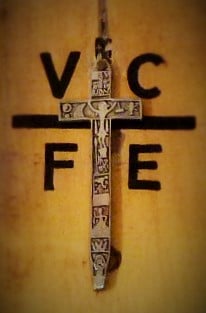- Home
- Our Community
- Our Faith
- Our Ministries
- Parish Life
- Bulletin
- Contact Us
- Search

Servants of the Lord & Virgin of Matara
The Institute Servants of the Lord and the Virgin of Matara, a religious community of diocesan right, was founded by Rev. Carlos Miguel Buela on March 19, 1988 in San Rafael, Argentina.
The Institute Servants of the Lord and the Virgin of Matara and The Institute of the Incarnate Word (IVE), comprised of religious priests and brothers, along with the Third Order, make up the Religious Family of the Incarnate Word.
We are a religious family, united by the same faith, the same goals, the same mission, the same founder, the same charism, and the same spirit. Our religious family consists of priests, seminarians, monks, SSVM sisters, and the IVE Third Order to form one family to live and to make others live under the action of the Holy Spirit. As St. Paul wrote, Where the Spirit of the Lord is, there is freedom. (2 Cor 3:17)
St. Augustine of Canterbury Catholic Church is staffed by Priests of the Institute of the Incarnate Word (IVE) along with the female branch of the Sister Servants of Our Lord and the Virgin of Matara (SSVM).
The name Servants (or Servidoras) is in reference to the faithful women who stood at the foot of the cross (Luke 8: 1-3) and is also a term used by St. Louis Marie Grignion de Montfort in his True Devotion, 56.
The second part of the name, the Lord and the Virgin of Matara (or del Senor y la Virgen de Matara) refers to the Crucified Christ and His Blessed Mother as found on the Cross of Matara worn by the sisters. Jesus on His Cross and the Virgin Mary must be the foundations of our spirituality. We, as women religious, believe that our primary vocation is to be the Spouse of Christ. We do this by giving ourselves totally to Christ, the Redeemer of Man and the Spouse of Souls through the vows of our consecration. By imitating Mary of Nazareth, the exemplar of every religious woman, we desire to be signs of God's tender love towards the human race and to be witnesses to the mystery of the Church, who is Virgin, Bride, and Mother.
The colours of our habit represent the mystery of the Incarnation. The blue represents the Divinity of Christ and the grey represents His Humanity. In that way, the blue scapular, which represents the Divine Word, put over the grey habit, which symbolizes the humanity, is an eloquent statement about the great mystery of the Incarnation, in which the Word was united with our nature and dressed in our flesh.
If you want to know more about us, please visit: www.ssvmusa.org.
